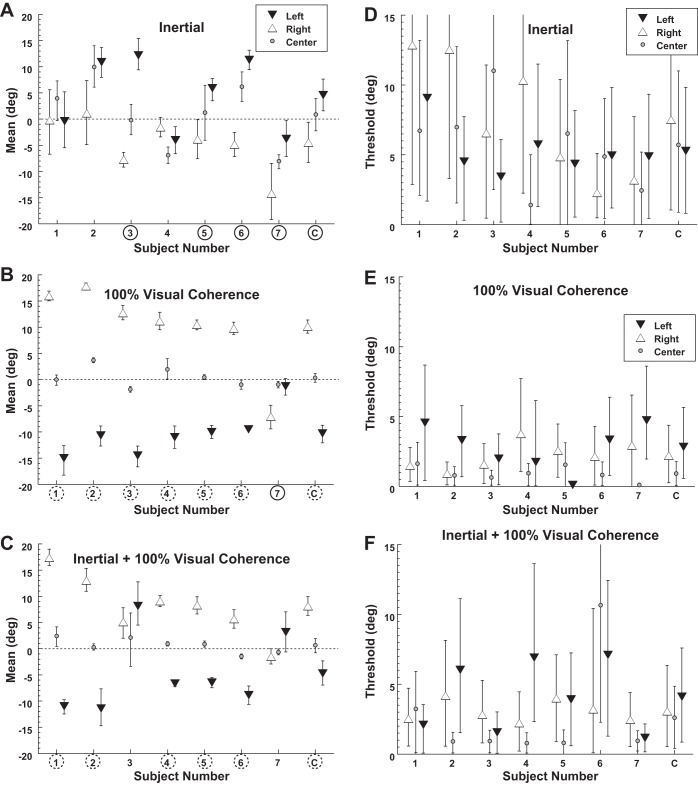Fig. 3.
Bias and threshold of visual and inertial heading discrimination. Each condition was tested with eye position 25° to the right or left as well as centered. Error bars represent the 95% confidence interval (CI) for each subject (1–7) or the combined data (C). A circled subject number indicates that leftward gaze shifted the point of subjective equality (PSE) significantly (P < 0.01 with a Monte Carlo technique) to the right when left and right gaze are compared, while a dashed circle represents a significant shift in the opposite direction. Subjects were put in order of their bias under the 100% visual coherence condition (B). A–C demonstrate the mean of the psychometric function, which is also the PSE at which subjects were equally likely to identify a stimulus as right or left. A data point shifted upward (positive) indicates that the PSE is shifted to the right. Thus a stimulus at the midline would be more likely to be perceived as toward the left. A: shifts in gaze caused perception of the inertial stimulus to be shifted in the direction of the gaze shift. B: shifts in gaze with a 100% visual coherence stimulus caused the PSE to shift in the opposite direction consistent with retinotopic coordinates. C: the PSE with a combined visual and inertial stimulus. D–F: thresholds during the conditions shown in A–C.

